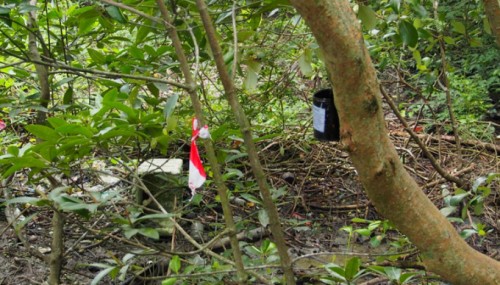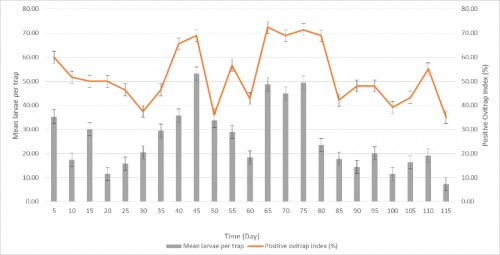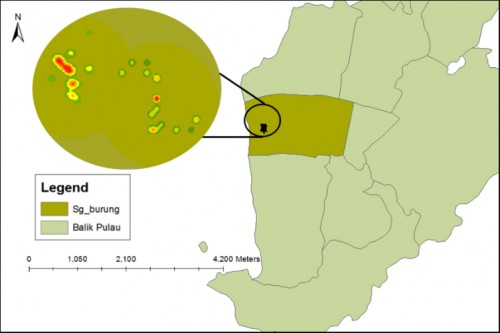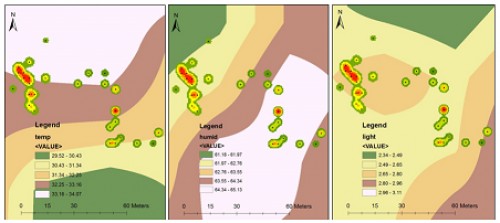The application of geographic information system (GIS) to assess the population abundance of Aedes albopictus (Skuse) in mangrove forests of Penang, Malaysia
 Fig. 1:
Fig. 1: Ovitrap deployed in mangrove forest in Sungai Burung, Balik Pulau
 Fig. 2:
Fig. 2: Temporal activity of
Aedes albopictus based on Positive Ovitrap Index (POI) and mean number of larvae per trap (MLT) in mangrove habitats of Penang Island, Malaysia.
 Fig. 3:
Fig. 3: Spatial distribution hotspot area map on population density of
Ae. albopictus in study area. (Source: ArcGIS 10.3 software).
 Fig. 4:
Fig. 4: Spatial interpolation on population density of
Ae. albopictus in relation to temperature, humidity and light intensity in study area.The data of meteorological parameters are interpolated to population density of
Ae. albopictus using inverse distance weighted (IDW). (Source: ArcGIS 10.3 software).





